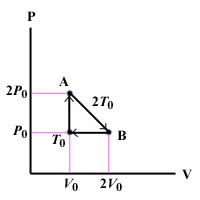
energy will always be lost to the environment
PHYS 1750: SELECTED TOPICS in PHYSICS
LECTURE 23. First and Second Law of Thermodynamics.
| 14.0. | Heat vs. Internal Energy | ||
| 1. | Forms of heat (all randomly distributed) | ||
| a. | Translational KE in three directions | ||
| b. | Molecular rotation (atoms cannot rotate!) | ||
| c. | Molecular vibration | ||
| 2. | Other internal energies | ||
| a. | Chemical bonds | ||
| b. | Nuclear energy | ||
| c. | Strain energy... | ||
| 3. | Heat transfer ONLY if there is a temperature difference | ||
| 4. | Thermal energy CAN increase without heat transfer (e.g. compression) | ||
| 14.1. | The First Law (really conservation of E) | ||
| 1. | ΔU: a change in internal energy | ||
| 2. | Q: heat transfer INTO system | ||
| 3. | W: work done BY system | ||
| 4. | ΔU = Q - W does NOT depend on path | ||
| 14.2. | Simple Processes | ||
| 1. | Q: heat transfer INTO system | ||
| a. | Q = mcΔT | ||
| b. | Depends on the "path" in P-V diagram | ||
| 2. | W: work done BY system | ||
| a. | W = FΔx = PAΔx = PΔV | ||
| b. | Depends on the "path" in P-V diagram | ||
| 3. | Note: for an ideal gas, U = 3NkT /2 = 3nRT /2 = 3PV /2 | ||
| 4. | Adiabatic process: Q added = 0 | ||
 | |||
| 14.3. | The Second Law | ||
|
Essentially: no process can convert heat to mechanical energy
with 100% efficiency; energy will always be lost to the environment | |||
| 14.6+. | Entropy and Disorder | ||
| 1. | Δ S = Δ Q/T | ||
| 2. | 2nd Law: all processes increase S in isolated systems | ||
| 3. | S = k*ln(w) | ||
| w = probability of distribution | |||